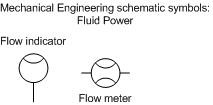 Flow
Control: Passive, Active, and Reactive Flow Management Flow
Control: Passive, Active, and Reactive Flow Management
by Mohamed Gad-el-Hak "The subject of flow control is broadly introduced
in this chapter, leaving much of the details to the subsequent chapters
of the book..."
Reviews:
"
...very well written with an enjoyable style ...certainly one of the
best books this reviewer has read in recent years. It will remain on
my closest
shelf to be consulted at any moment on any topic it covers." Applied
Mechanics Reviews "I would certainly recommend the book, at the
very least as a useful source of information. but also as a thought provoking
read for all those interested in the field." The Aeronautical Journal
Mar 2001 "This is a very interesting book, and a charming one...it
is a pleasure to recommend this book to anyone seriously interested in
these clever techniques." SIAM Reviews
Product Description:
The ability to actively or passively manipulate a flow field to bring
about a desired change is of immense technological and economical importance.
This volume provides a thorough, up-to-date treatment of the basics
of flow control and control practices that can be used to produce desired
effects. The author explores the frontiers of flow control strategies,
especially as applied to turbulent flows. Intended for engineering and physics students, researchers, and practitioners, Flow Control
brings together in a single source a wealth of state-of-the-art information
on this very active field.
Another Review:
concise material for research student on fluid dynamics
the content suits the student who would like to study fluid dynamics
in a more specific content. those content are important and critical
in fluid. this new book has the quite new field like MEMS, it also has
interesting historical note, and mixing. this book is useful
top of page
|
 Flow
Control Devices Flow
Control Devices
by Yochanan Dvir
From the Publisher
Few books in the technical literature deal with appliances in * piping
systems for fluid supply. This book contributes largely to * this,
so important subject. A very wide range of appliances, their * hydraulic and mechanical properties can be found here, together with * some unique and important topics in applied hydraulics, and among * them: the hydraulic
interdependence of the throttling device and the * piping system, and its influence on mechanical actuation of the * device. check valve
behavior at various flow velocities, and the * consequent sizing of
the valve. air flow conditions in an air * valve, as basis for sizing
air valve orifice for draining and * filling the piping system. These
together with an extensive, clear * description of most of the devices
used for flow control, their * performance, installation and maintenance
requirements make this * book a must for every water, oil or industrial
piping system * designer, manager and operator.
Book Description:
This book deals with devices serving for control of flow in liquid supply and distribution systems, municipal, industrial and agricultural. It
describes most of the appliances used in such systems, the various
mechanical and hydraulic properties of such devices, and gives useful
information on the installation and maintenance required to ensure
their proper functioning. The topics dealt with in the book include
stop, check, regulation and safety valves, air valves, meters, gauges,
filters and joints and also problems in applied hydraulic - water hammer and cavitation.
Excerpted from Flow Control Devices by Y.Dvir. Copyright © 1997.
Reprinted by permission. All rights reserved.
From Introduction: Any device installed in a fluid supply system, in
order to ensure that the fluid reaches the desired destination, at the
proper time, in the required amount (the flow rate), and under the right
pressure, is called a control appliance. As such an appliance controls
proper operation of a fluid system, selecting its type, size and placement
is of uppermost importance and ought to be done with the full knowledge
of the various features of the device and with complete understanding
of the way it performs. Equally important is proper maintenance in order
to ensure faultless and sound performance of the appliance.
top of page
|
 Flow Control
by Feedback Flow Control
by Feedback
by Ole M. Aamo, Miroslav Krstic, Ole Morten Aamo
Book Info
A comprehensive survey of feedback algorithms for flow control that are
currently available. Content structure is ideal for instruction on
flow control modules or as supplementary reading on fluid dynamics and infinite dimensional systems courses.
Book Description:
The emergence of flow control as an attractive new field is owed to breakthroughs
in MEMS (micro-electromechanical systems) and related technologies.
The instrumentation of fluid flows on extremely short length and short
time scales requires the practical tool of control algorithms with
provable performance guarantees. Dedicated to this problem, Flow Control
by Feedback, brings together controller design and fluid mechanics
expertise in an exposition of the latest research results. Featuring:
Exhaustive treatment of flow control core areas including stabilization and mixing control techniques; self-contained introductory sections
on Navier-Stokes equations, linear and nonlinear control and sensors and MEMS to facilitate accessibility to this cross-disciplinary subject;
a comprehensive survey of feedback algorithms for flow control that
are currently available. In response to the intense interest in flow
control, this volume will be an essential addition to the library of
researchers and graduate students in control theory, fluid mechanics,
mathematics and physics. Content structure is ideal for instruction
on flow control modules or as supplementary reading on fluid dynamics and infinite dimensional systems courses.
top of page
Other flow meter pages:
|



